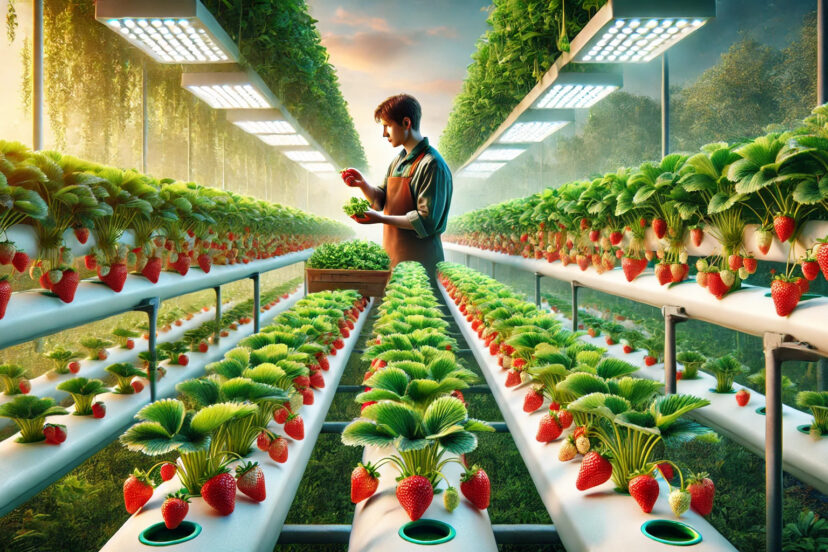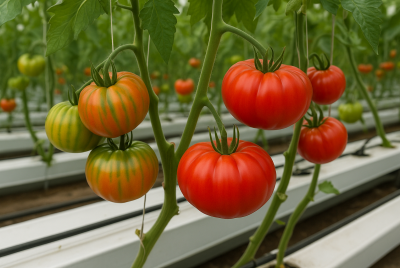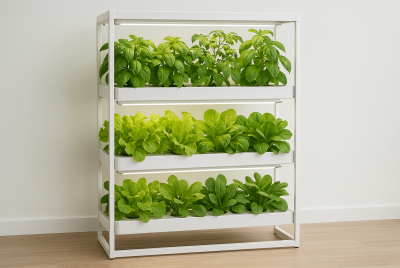Hydroponic Strawberries: Journey to Year-Round Sweetness
We may earn a commission for purchases made using our links. Please see our disclosure for more details.
Hey there, fellow green fingers! Imagine spending months nurturing your dear strawberry plants, only to have an army of pests ruin all your hard work. Heartbreaking, right? Makes you wanna scream for justice!!! Trust me, I’ve been there, and the frustration is real. Save yourself from drama and just grow hydroponic strawberries! No more creepy crawlies plaguing your sweet red berries. Let’s dive in and learn how to make this possible!
What Are Hydroponic Strawberries?
So, what’s the deal with hydroponic strawberries? Well, unlike the usual, soil-grown strawberries, these are grown in a nutrient-rich water solution. You can ditch the soil because you only need nutrient-rich water here. But how? The roots of the plants are put up in water that contains all the nutrients they need to thrive. Actually, this method is becoming more popular for gardeners because it doesn’t take space and time.
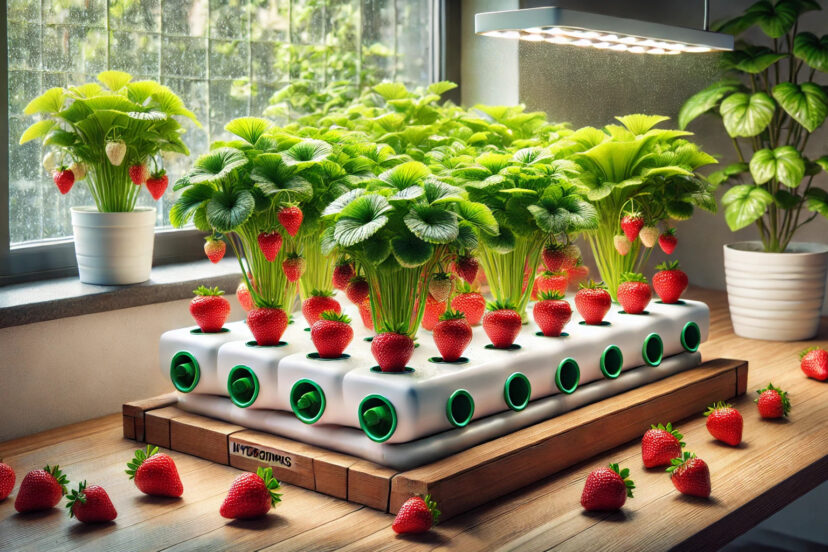
Why Choose Hydroponics Over Traditional Soil?
If you’re into gardening but can’t stand dirt and don’t have the time, hydroponics is your new BFF. I used to try growing herbs in pots, but they always died—thanks, pests! Soil-based gardening is basically prone to pests and unpredictable weather. You also need to think about the soil quality which for me is just hard work. But with hydroponics, you have control over the environment. Imagine growing strawberries in a small apartment… what a nice view every morning!
The Science Behind Hydroponic Growing
Alright, just how do plants grow without soil? Are you crazy? Is that even possible? Double yes! Thanks to the magic of nutrient-rich solutions. It has everything your plant needs (plus sunlight!). In a hydroponic system, water is enriched with essential nutrients like nitrogen, phosphorus, and potassium, which are typically found in soil. The roots absorb these nutrients directly from the water so they can grow and produce faster.
Hydroponic gardening is proving to be a sustainable and productive method for growing crops like strawberries. Research from Auburn University shows that hydroponic strawberry production is not only feasible but also yields high-quality results. Additionally, a study in ScienceDirect highlights the efficiency of hydroponic systems in using water and nutrients while reducing environmental impact, making it a valuable approach in modern agriculture.
Types of Hydroponic Systems You Should Know
– Nutrient Film Technique (NFT): NFT is like a thin stream of nutrient water that constantly flows over the roots. The best part? Leftover water gets recycled.
– Deep Water Culture (DWC): For starters, I suggest you start with DWC. Here, the roots are fully submerged in a nutrient solution, while the plant itself stays above water like a boss.
– Ebb and Flow (Flood and Drain): Think of this method as flooding the plant roots with nutrient water at regular times, then draining it away. Just like mini ocean tide.
– Drip System: Have larger setups? This is for you. The water solution is delivered straight to each plant’s roots via a drip line.
Getting Started: Setting Up Your Hydroponic System
Ready to start growing hydroponic strawberries? Awesome!!! First, choose the right system you need. If you’re a first-timer, I suggest you go with the Deep Water Culture system. Why? Well, they’re the easiest to set up. If you have the resources and are ready for the next level, then try NFT.
Once you’ve chosen your system, it’s time to gather your materials. Here’s a basic list to get you started:
– A hydroponic system (you can purchase a kit or build your own)
– Grow lights (if you’re growing indoors)
– Strawberry seedlings or runners
– Growing medium (like perlite, coco coir, or Rockwool)
Choosing the Right Strawberry Varieties
The next step, choose what kind of strawberries to grow. Some popular choices include:
– Everbearing varieties: Want to eat strawberries whenever you like? Everbearing varieties are your go-to. They produce all season long. Try ‘Albion,’ ‘Seascape,’ or ‘Evie-2’ for a constant supply of berries.
– Day-neutral varieties: Short on sunlight? That’s fine! Day-neutral strawberries don’t care about daylight hours and can produce fruit year-round. ‘Tristar’ and ‘Tribute’ are great options.
Planting Your Hydroponic Strawberries
Let’s get your green thumb working! Start by placing your strawberry seedlings in the growing medium. Make sure those roots are getting plenty of contact with the nutrient solution. If you’re using NFT or DWC systems, ensure the roots are suspended in the solution without fully submerging them. You don’t want to drown your berries!
Lighting: The Key to Healthy Growth
Don’t underestimate the power of light. Sunlight is crucial for photosynthesis! But what if you’re growing them indoors? That’s okay, grab some LED grow lights in a hydroponic store near you—they’re the next best thing to sunshine. Just make sure they’re not too close to your plants cause it might stress them. 12-16 hours of light each day is best.
Nutrient Management: Feeding Your Strawberries
Feed those sweet little babies just right! Strawberries need their nutrients to grow big and tasty. Use a high-quality nutrient solution, specifically made for strawberries or fruiting plants. You can find some great options online or in stores. On top of that, keep an eye on the pH levels of your solution. Strawberries love a slightly acidic environment, so aim for about 5.5 to 6.5 pH.
Watering: Keeping Your Plants Hydrated
Watering? Are you serious??? Yes, I know it’s kinda hilarious 😄 But hey, you still need to monitor the water levels unless you want them to drown… which I doubt. Do you want wilted berries? No? Then keep an eye on them. Make sure they’re getting what they need.
Pest and Disease Management
Even in hydroponics, pests can sneak in. Be on the lookout for common culprits like aphids, spider mites, and whiteflies. If you spot any, natural insecticidal soaps or neem oil are your best friends.
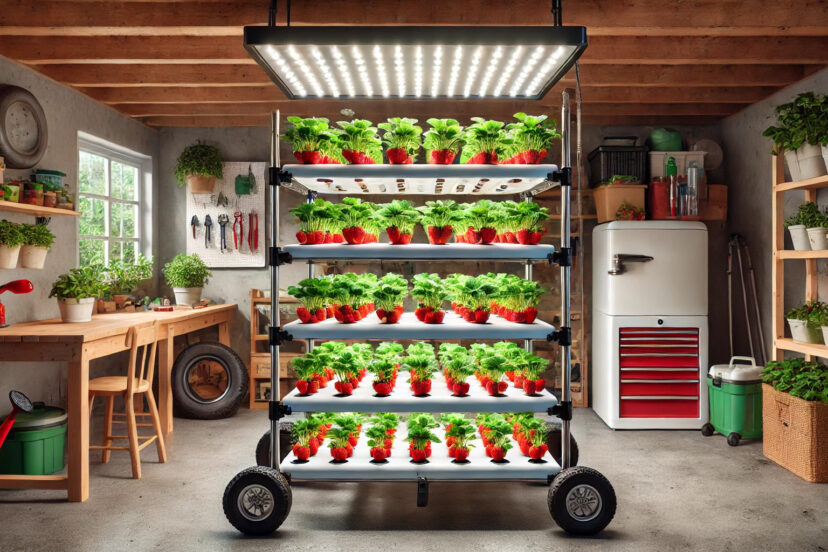
Pollination: Ensuring Fruit Production
How about pollination? In an indoor hydroponic garden, you take on the role of pollinator. “Wait, what? I’m not a bee!” Then be like one. Just kidding! Brush the flowers with a small paintbrush to vibrate flowers and transfer pollen. Don’t be lazy, think about your delicious home-grown strawberries!
Harvesting Your Hydroponic Strawberries
On to my favorite part… it’s harvest time! Ah, what a rewarding experience seeing those little shiny red fruits… With hydroponics, expect your plants to start producing fruit within a few months, depending on the variety. Strawberries are ready to harvest when they’re fully red and have a sweet aroma. Simply pick them off the plant and enjoy. Make a delicious strawberry jam!
Troubleshooting Common Issues
Even with the best care, stuff happens. Here’s how to handle a few common issues:
- Yellowing leaves: Probably a nutrient deficiency, usually nitrogen. Check your nutrient solution and tweak it as needed.
- Slow growth: This could be from low light or the wrong pH levels. Make sure your plants are getting enough light and that the pH is spot on.
- Root rot: Blame it on overwatering or poor drainage. If you see wilting or brown roots, cut back on watering and improve drainage please!
Products to Consider
Hydroponic Nutrient Solution for Strawberries
- Essential for providing strawberries with the nutrients they need to thrive in a hydroponic system.
- Affordable and energy-efficient, these lights are perfect for indoor hydroponic setups, ensuring your strawberries get enough light.
- A must-have for maintaining the correct pH levels in your hydroponic nutrient solution to ensure optimal growth.
- These pots are ideal for supporting strawberry plants in a hydroponic system, allowing roots to grow freely while being securely held in place.
- A popular choice for hydroponic setups, coco coir provides excellent water retention and root support for strawberry plants.
Conclusion
Growing your own fresh, juicy strawberries year-round with hydroponics? Totally possible and absolutely worth it. Hydroponic strawberries are just as sweet and tasty as those grown in soil. Plus, it’s a sustainable, fun way to garden. Follow these tips, and you’ll be harvesting your own delicious berries in no time. Happy gardening!
Check this out:
5 FAQs About Hydroponic Strawberries
Q1: Can I grow hydroponic strawberries indoors?
Yep! Just make sure they get enough light, and you’re good to go. LED grow lights can help if natural light is lacking.
Q2: How long does it take for hydroponic strawberries to produce fruit?
Usually, they start fruiting in 2-3 months, depending on the variety and conditions.
Q3: What’s the best strawberry variety for hydroponics?
Everbearing and day-neutral varieties like ‘Albion,’ ‘Seascape,’ and ‘Tristar’ are top picks for hydroponics.
Q4: Do hydroponic strawberries taste different from soil-grown ones?
Hydroponic strawberries can taste just as good, if not better, thanks to the controlled environment and optimal nutrient absorption.
Q5: Is hydroponic farming expensive?
There’s an initial investment, but it can pay off in the long run with year-round growing and savings on water and space.

